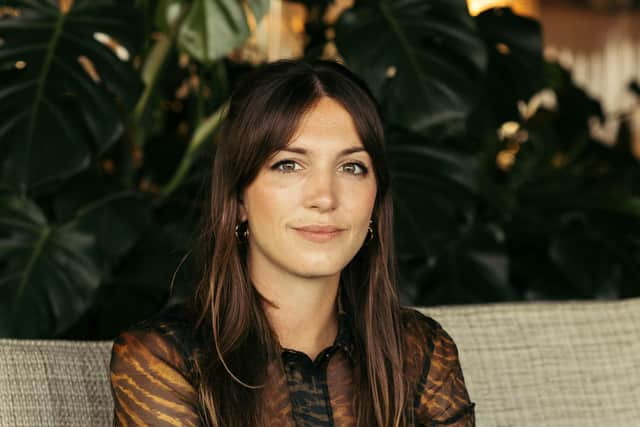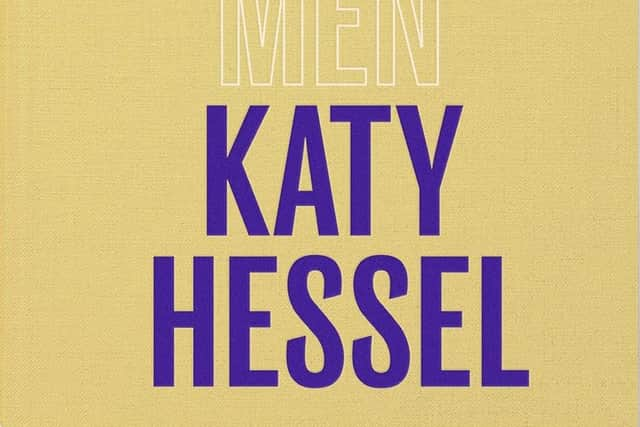Book review: A Story of Art Without Men, by Katy Hessel
As a schoolboy I was sucker-punched into investing in a part-work that claimed it would teach me about “The Great Painters”. As far as I remember, the only women who were great were Bridget Riley and Gwen John. I bought another part-work, and cannot recollect a single female artist (though I always wondered why Utrillo made the cut in one but not the other). Then I read EH Gombrich’s The Story Of Art, and thought – it was in a library, after all – this must be definitive. Bits chipped away over time, until I reached the liberation of realising that I will never know everything about art.
Katy Hessel’s book is a welcome reminder of that. Tracey Emin is quoted on the back cover saying “It’s a long way before the balance is truly redressed but this is a good start”. I agree. It is produced to the standards of Gombrich’s classic (and Norbert Lynton’s The Story Of Modern Art); I learned things from it and I shall squabble with aspects of it. Gombrich made a schoolboy error in using the definitive “The”. “A” history is always better than “The” history; “My” might be better than all.
Advertisement
Hide AdThe thumbs are on the scales in the earlier chapters, since so little of women’s art survives. There are the now well known outliers – Gentileschi and Kauffman – but also a curious eye towards the overlooked. I was particularly taken with the discussion of Clara Peeters, and her hidden self-portraits within still-lifes, and with Fede Galizia’s surreptitious inclusion of herself into a portrait of Paolo Morigia. He controls the gaze, and she is slyly tucked away. These artists seem to represent the pendulum of the book. In earlier centuries, female artists had to be subtle and canny. They had to out-manoeuvre both patron and sitter. From constraint came innovation.


Hessel rightly looks at folk art, art naïf and ceramics, since women’s artistic endeavours – excluded from the academies and letting the poor dears not blush in a life drawing class – were often channelled elsewhere. The parts on quilting are of especial interest. These were functional and political, as the work of Ellen Baker and Harriet Powers, show; but they also made a punch into the future. The aforementioned Emin’s Everyone I Have Ever Slept With is a version of the quilt – as is, I suppose, the infamous My Bed. I would have preferred more on amateur and folk art – when one thinks of all those samplers and tatting and crochet work, there is surely more to be done in honouring these hidden creativities. Not everyone even wants to be on a gallery wall. It is a little surprising there is not more on tapestry. Surely some of these were done by women, even if the design was by a man?
That said, there are fine mini-essays on the likes of Anna Atkins and Mary Delany, Joanna Koerten and Maria Sibylla Merian. As the book hurtles towards the present, the insistence on resisting the Eurocentric, phallocratic, misogynistic, dismissive of the narratives of queer and persons of colour narratives becomes a tad overdone. There is enough in the work that we can do without a lecture on the work.
Perhaps the best parts of the book involve a quieter and more careful form of study. The misattribution of works is fascinating – I will confess that I always thought the portrait of Marie Joséphine Charlotte du Val d’Ognes was by Jacques-Louis David (indeed, I am sure “The Great Painters” told me so). It’s not, it’s by Marie Denise Villers. I think Hessel is on less sure ground in asserting that Baroness Elsa von Freytag-Loringhoven is the true “creator” of Duchamp’s notorious Fountain. Given Duchamp had a female other identity – Rrose Sélavy – and planned his disruptions years in advance, I might maintain the original credit.
Hessel’s book originated from an Instagram account (@thegreatwomenartists) and some of the writing seems more akin to the caffeine rush of the like than to considered pose. There are rather too many exclamation marks for my liking, as if the reader is too dim to realise they are reading some sexist drivel from the not-so-recent past. But impetus is important, and maybe we all need some correction.


No book like this can be exhaustive, and Hessel admits that. At the beginning, she quotes a survey she conducted, via YouGov, that revealed 30 per cent of the population could not name three female artists. That is shameful, and perhaps gallerists rather than state-supported galleries ought to be held accountable, But here’s a thing: Elizabeth Blackadder, Joan Eardley, Lucy Skaer, Jessie M King, Alison Watt, Ann Redpath, Helen Turner, Grace Stewart, Astrid Jaekel, Mairi Hedderwick – all Scottish, all female, all unmentioned. (I could go on: Tacita Dean gets a by-your-leave, Maggi Hambling is absent, Abigail Lane is not at the party, nor is Sam Taylor-Wood). Maybe the next step is to have serious, dedicated studies to the overlooked artists of the past and present. But as Emin said, this is “a good start”.
The Story Of Art Without Men, by Katy Hessel, Hutchinson Heinemann, £30